The fabulous sub sandwich rolls I purchased a couple of days ago were looking at me rather sadly through their plastic bag, begging to be used up in one final productive way, instead of being tossed in the bin, or ground up to make breadcrumbs. My craving for French toast and my desire to have something baking in the oven while I continued with my morning routine of laundry and cleaning led me to this recipe, from Clifford A. Wright’s amazing casserole book, Bake Until Bubbly.
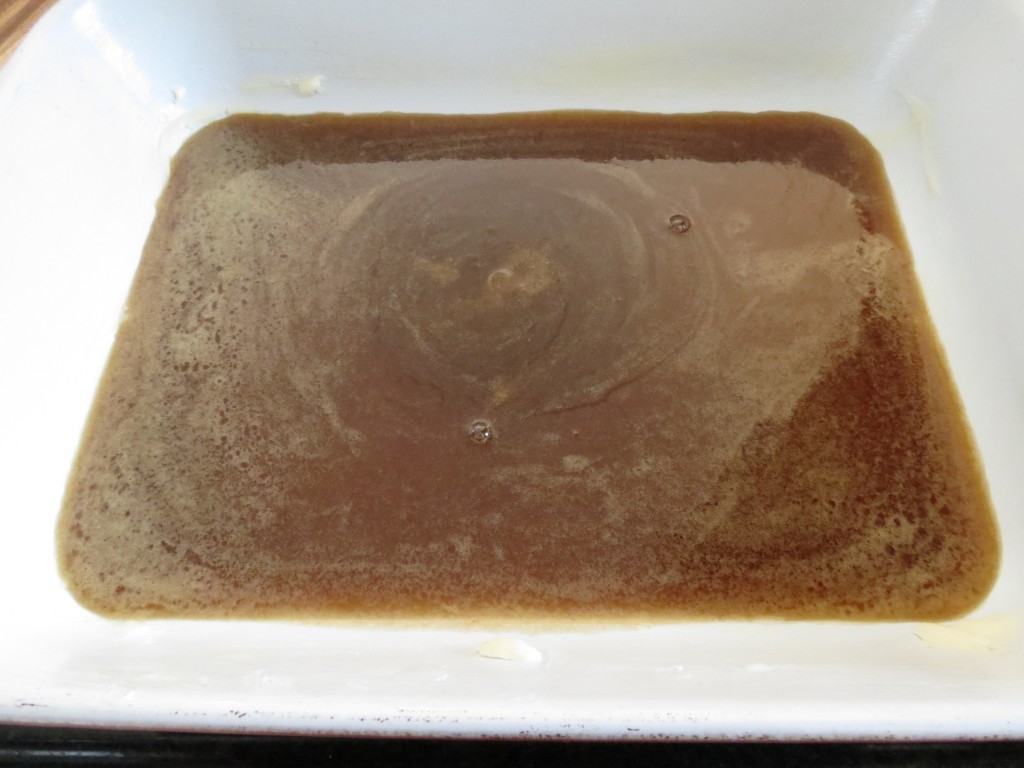
Look at all of that syrupy pool of brown sugar and butter that the soaked bread gets to bake in. To ensure some self-saucing goodness.
I am so in love with this book, for a multitude of reasons. First, it speaks to one of my favourite dishes to prepare – the casserole. Casseroles are usually a one dish affair that combine a bunch of ingredients (and often leftovers, to boot), that bake slowly in the oven until they miraculously transform into something even better than the original dishes from where these goods came. I love the idea of something baking in the oven for a while prior to eating. I can then accomplish a few things before the meal is served, and the thing I like the most about casseroles is that you have plenty of time to do the dishes before you sit down for the meal. That way, clean up is minimal once dinner’s done. That’s a winner in my books.
This recipe caught my eye because it required what I usually had on hand, and was going to make good use of my stale submarine buns. This was really easy to whip up, and in the half hour it baked in the oven, I tackled all the dishes, did a load of laundry, and sat down with a cup of coffee to plan today’s supper while perusing some cookbooks. All in all, a productive affair if you ask me. And, infinitely easier than cooking French toast the traditional way, by frying up slice after slice in a frying pan, and having to butter the pan after each slice. No stove side pottering, and some high quality “me” time before sitting down to a delicious hot breakfast.
This casserole is so good, because it involves making a brown sugar syrup and covering the bottom of the casserole dish with it prior to layering the bread and egg mixture. A self saucing little number that does not disappoint, might I say. Clifford notes that you don’t need to serve this with anything else, given the wonderful syrup that pools underneath the bread, but he recommends some maple syrup on the side. Done.
If you’re wondering where the name of this dish comes from, Clifford (a great culinary historian in his own right) says that there’s nothing French about French toast. The root of this dish goes back to ancient Rome, and the idea of soaking stale bread in a liquid and cooking it was common in medieval times. Where the classic American French toast dish likely comes from is New Orleans, where it was popular for breakfast, and was called pain perdu, which means lost bread in French. Any way you call it, this is delicious.
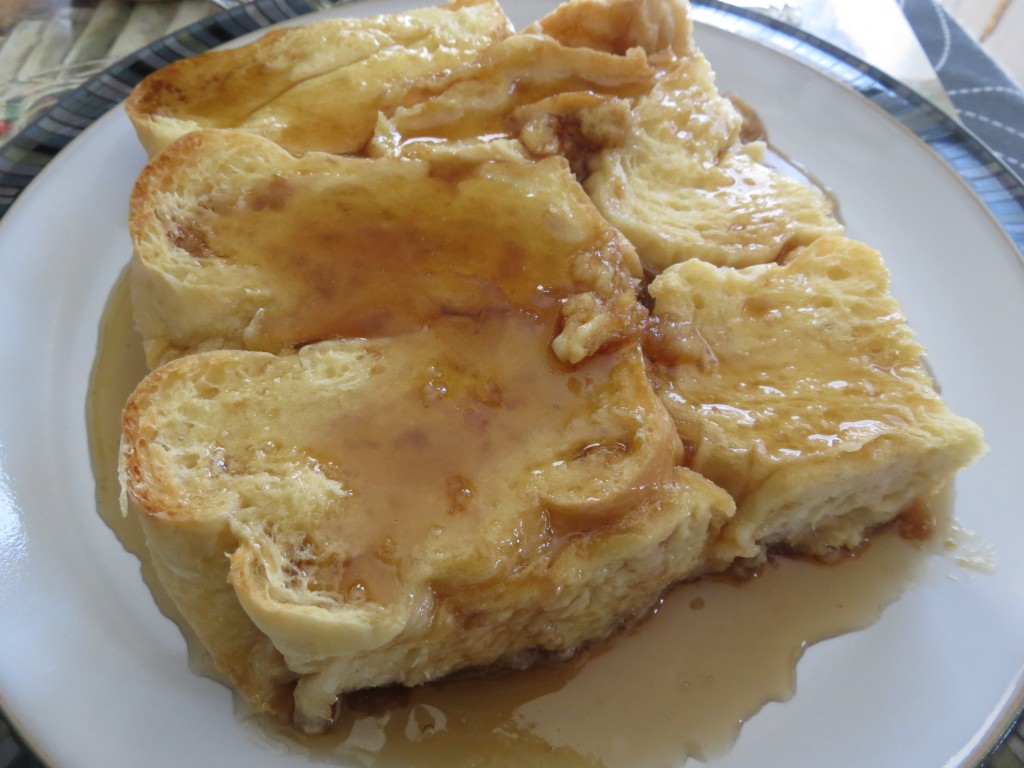
Meat and Tater Man didn’t pass up the maple syrup. Because he’s a lover of sugar, in all its forms. In this case, I agree.
Clifford recommends making this casserole the night before, and baking it in the morning. I baked it after a half hour of rest time from when I assembled it, and it came out glorious. The choice, here then, is yours.
Whether you assemble this casserole the night before or the morning of, you will be in for a glorious breakfast treat when serving this hot from the oven.
The boozy baker in me added a shot of dark rum to the syrup, but that's completely optional. But not a bad idea if you've got some rum hanging about on your countertop.
Ingredients
- 3/4 cup brown sugar
- 1/2 cup (1 stick) butter
- 2 tbsp light corn syrup
- 1 round loaf French or Italian country bread (about 1 pound), cut into 1 inch thick slices
- 5 large eggs
- 1 1/2 cups whole milk (I used 1 cup light cream 5% and 1/2 cup low fat milk)
- 1 tsp vanilla extract
Instructions
- Lightly butter a 13 x 9 inch baking casserole.
- In a saucepan, stir the brown sugar, butter, and corn syrup over medium heat until the sugar and butter melt, and the mixture is syrupy but does not caramelize, about 4 minutes.
- Pour the melted brown sugar syrup over the surface of the baking casserole.
- Arrange the bread slices in the syrup.
- In a bowl, whisk the eggs milk and vanilla to blend. (I used an immersion blender to ensure my eggs were fully blended with the milk). Pour the egg mixture over the bread slices. Cover with plastic wrap and refrigerate overnight. (Or, you can do what I did, and let the casserole rest for a half hour on the kitchen counter before baking).
- Preheat the oven to 350F.
- Remove the casserole from the fridge 30 minutes before baking it. Uncover and bake until the bread slices puff and the liquid around the sides are bubbling, about 30 minutes. Serve hot.


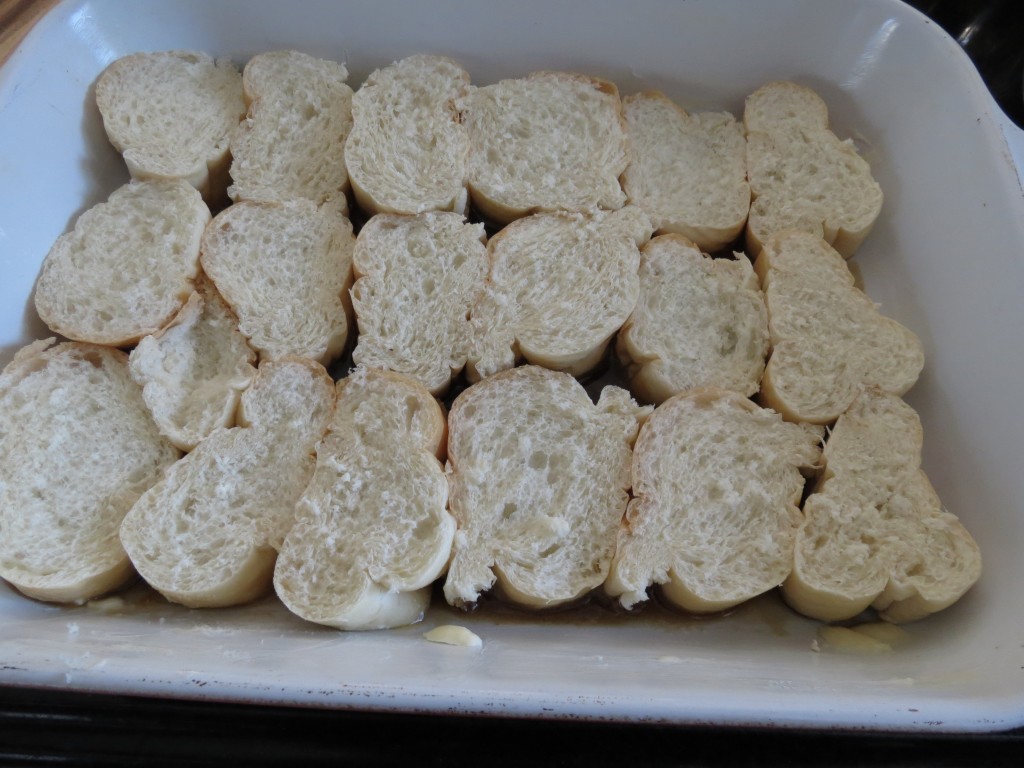
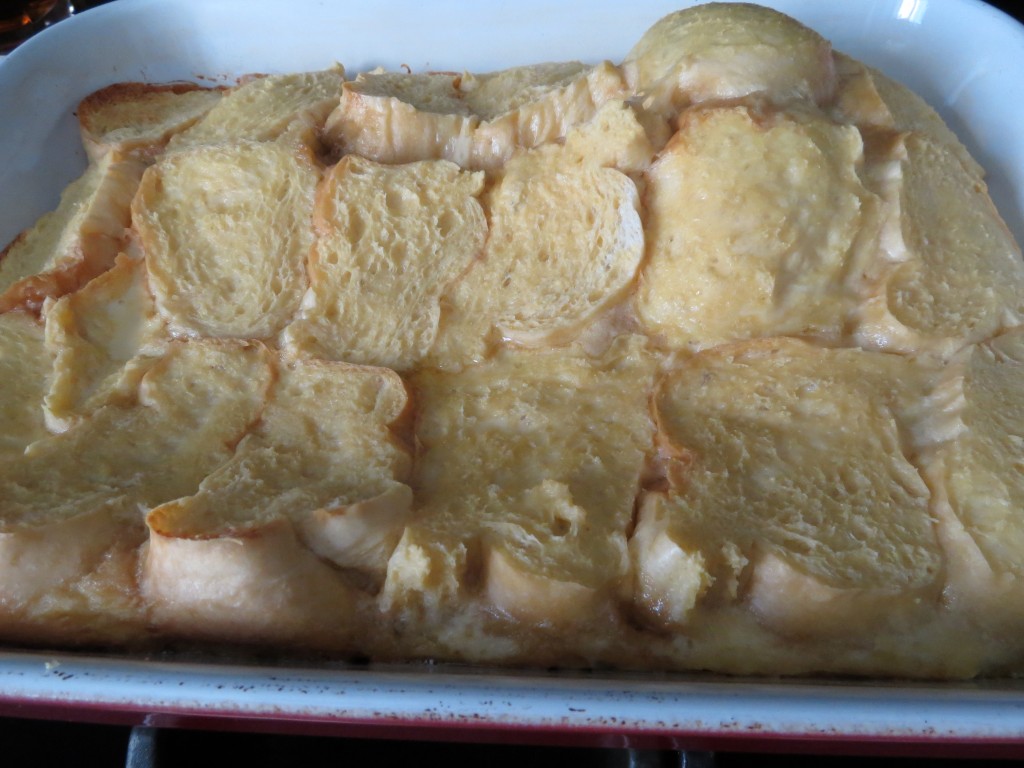
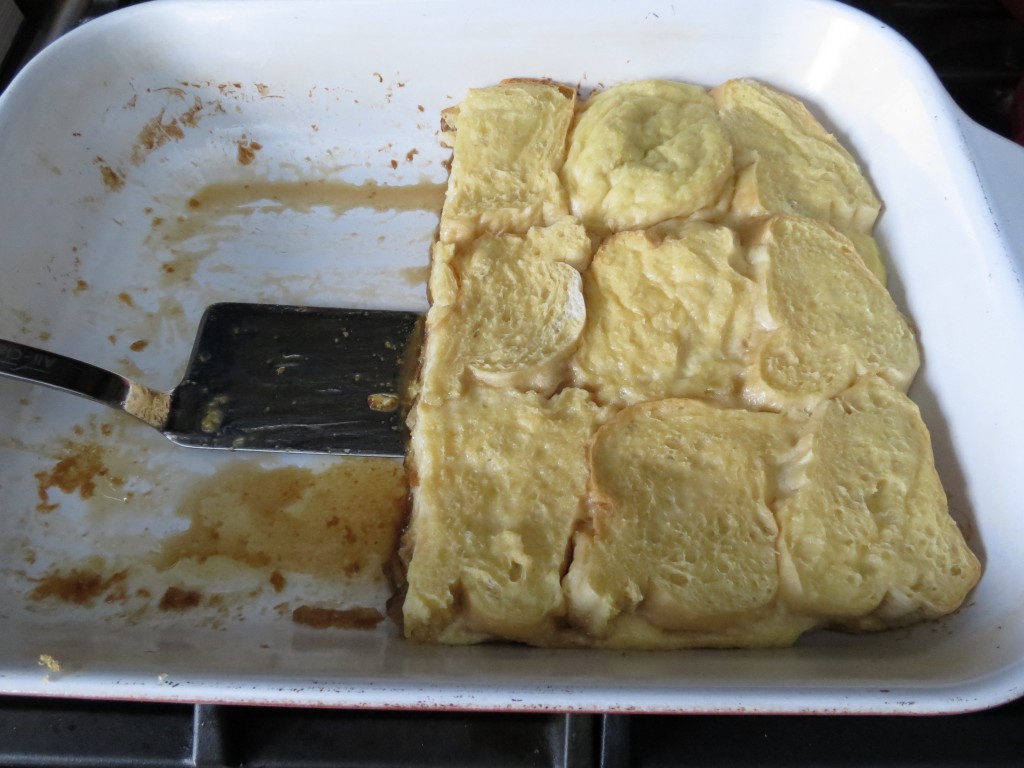
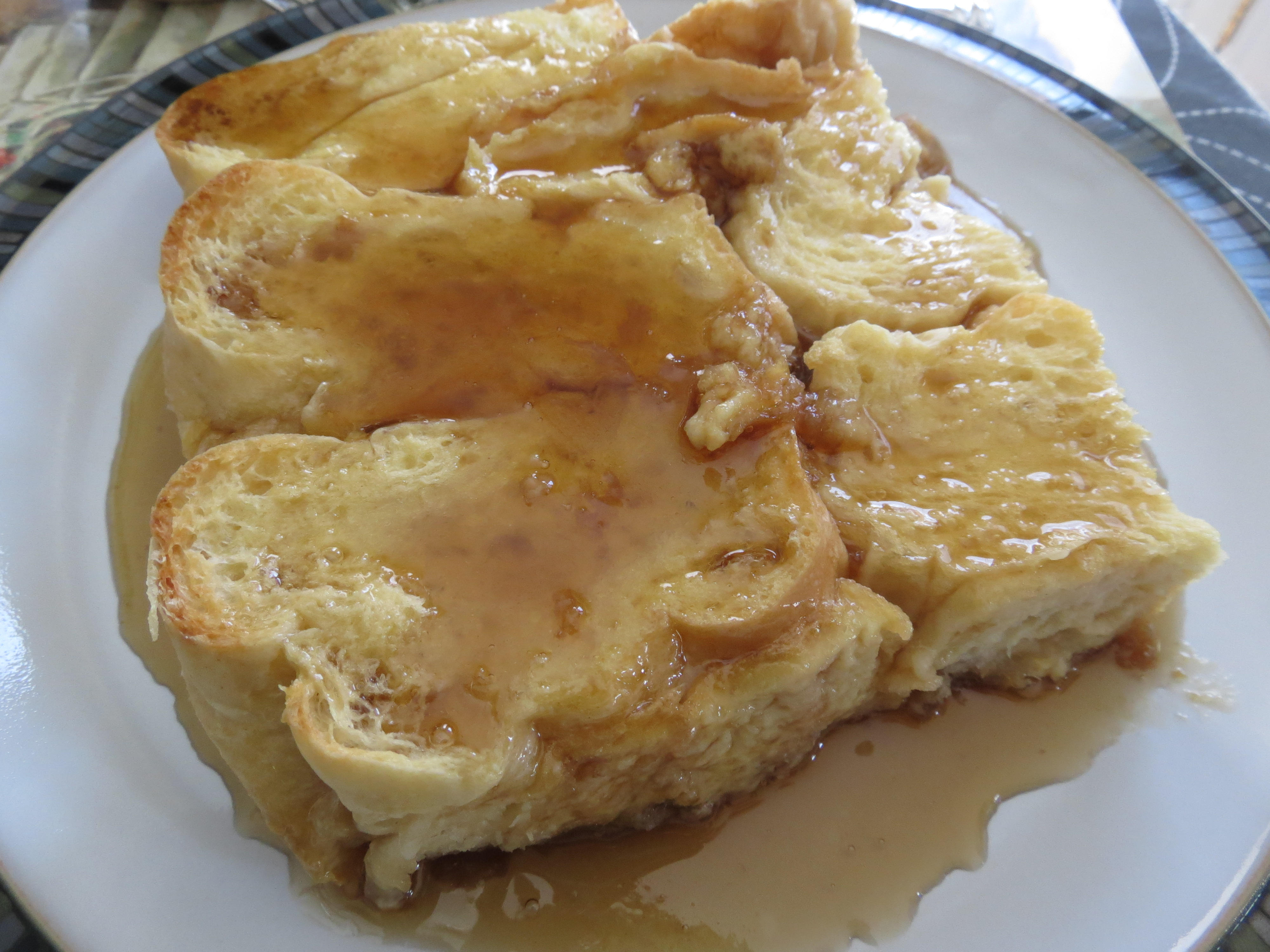
Leave a Reply